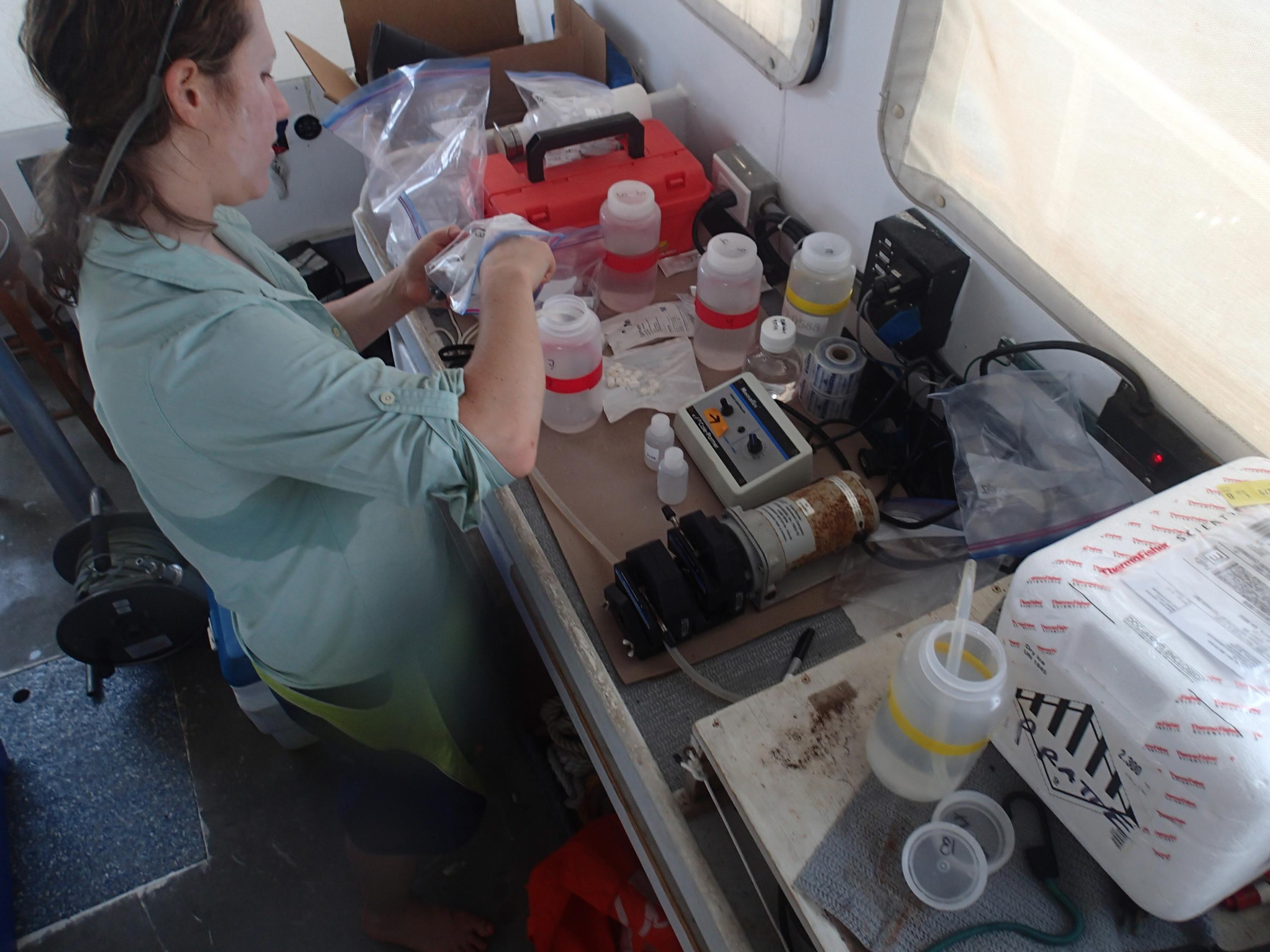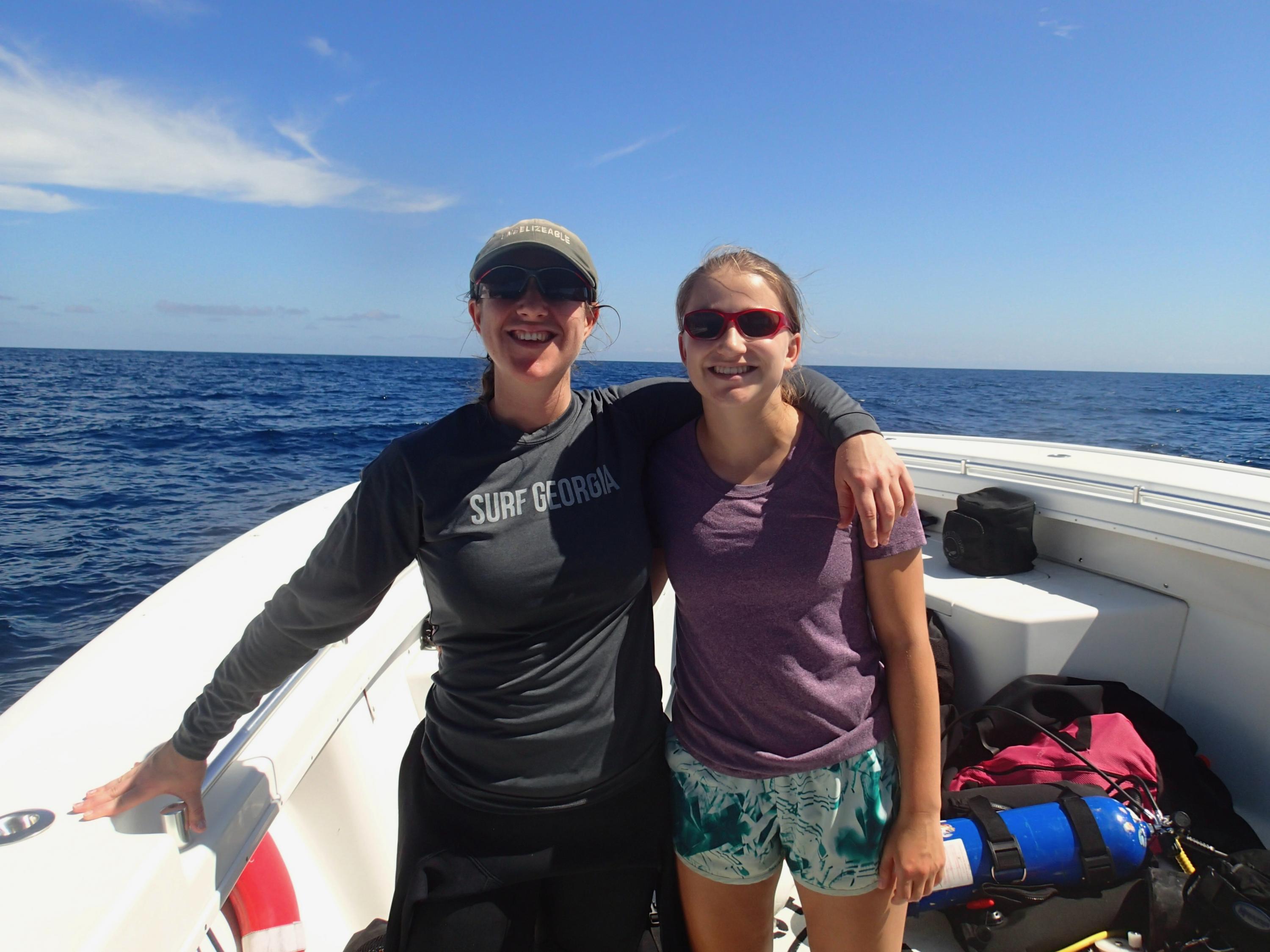How and where to watch:
“Changing Seas” episode “Florida’s Blue Holes: Oases of the Sea” will air these dates and locations this month:
Known as blue holes, underwater sinkholes that dot Florida’s western coastal shelf can challenge the most experienced divers, with openings that can be 200 feet below the Gulf of Mexico’s surface.
Created through exposure to the elements in previous ice ages, when Florida’s limestone shelf was above sea level, these underwater sinkholes can be an additional 200 feet deep into the coastal floor, requiring special breathing gear for very intrepid divers. Blue hole openings can also be too narrow for automated probes, and so many remain unexplored. Yet these submerged sinkholes could contain clues to how life developed on Earth, how organisms adapt to low oxygen levels in water, and insights on the effects of climate change on the environment.
The chance to be one of the first to conduct microbiological experiments on blue holes 200 miles west of Sarasota led Nastassia Patin, a postdoctoral researcher in the School of Biological Sciences, to test her own diving abilities during two expeditions last year. “The whole experience was a great thrill,” Patin says. “These days, it is very rare to get the first look at a completely unexplored ocean environment. The field work challenges just highlighted why this work hasn't been done in the past.”
Meet the team, tune in this summer
That work, featuring a team of researchers that includes Patin and two fellow College of Sciences researchers, is the subject of a new episode of a WPBT South Florida PBS series, “Changing Seas”.
Kicking off the series’ 12th season, the episode “Florida’s Blue Holes: Oases of the Sea” will air at 8 p.m. on June 24 on WPBT. Virtual screenings online are set for the same day and time. A re-airing is scheduled for June 28 at 9 p.m. on sister station WXEL.
Patin conducted the field work with Georgia Tech School of Earth and Atmospheric Sciences professor Martial Taillefert, and School of Biological Sciences adjunct associate professor Frank Stewart, who is also an associate professor in environmental microbiology at Montana State University. A summer Georgia Tech Research Experience for Undergraduates (REU) student, Zoe Dietrich from Bowdoin College, also joined the Tech group. Other scientists on the team hail from Florida Atlantic University, the U.S. Geological Survey, and Sarasota’s Mote Marine Laboratory and Aquarium. The research dives featured in the episode were conducted in May and September 2019.
Deep dives, successful sampling
Blue holes are named for the variations in the color of water of these sinkholes — deep blue at their depths, lighter blue at their shallower edges. Previous studies also suggest that deeper “blue hole” water is lower in oxygen and more acidic than shallower depths.
“This has important implications for understanding how life evolved on Earth, before oxygen was abundant in the atmosphere, as well as for future ocean ecosystems, which are predicted to be lower in oxygen as well as warmer and more acidic,” Patin says.
When it comes to the microbial discoveries of blue holes, Patin says the team went in not knowing what to expect. “These environments are fascinating from a microbial perspective because they are isolated habitats within the relatively shallow ocean. Every time a new habitat is discovered and characterized, we find new types of microbes with new biochemical capabilities.”
When oxygen is low or absent, these microbes can respirate other chemicals, "breathing” in nitrate or sulfate instead. “We were looking for microbes that can thrive in anaerobic conditions, and possibly tell us something about how nutrients cycle in these holes and affect the surrounding marine environment.”
All that meant taking a lot of dives to conduct water and bottom soil sampling — the latter proving to be difficult, as it required a combination of highly specialized divers as well as the deployment of a “benthic lander,” a large autonomous instrument Taillefert developed at Georgia Tech to measure chemical features of the bottom sediments. The lander “includes geochemical sensors to collect geochemical data as a function of depth in the sediment with a millimeter resolution, and a benthic chamber to measure the flux of chemical species across the sediment-water interface,” Taillefert says.
“This lander was deployed by deep cave divers, which was cool,” he adds. “It was the first time we did these deployments with divers. Typically we drop them directly from the ship either suspended to a line, to gently deploy the landers in shallow environments (less than 70 meters), or freely for deep sea deployments (less than 3,500 meters). In this case, the hole diameter was too small to be able to do that, hence the need for divers. However, we had to modify the lander slightly to make it buoyant such that it would be light for the divers to handle, but heavy enough to sink to the sediment.”
“Getting the lander into the hole and all the divers safely in and out of the hole required extensive logistical planning and coordination by Mote, our host lab,” Patin says. “Their boats and staff played a crucial role in the project. Despite occasionally uncooperative weather and equipment, the team was able to conduct two successful sampling trips “that have taught us a lot about these environments, and in fact they are even more remarkable than we suspected.”
Discovering Woesearchaeota in deep waters
The first finding the team noted is that oxygen was absent at the bottom of the hole, and hydrogen sulfide levels were very high. While bigger, open-ocean oxygen minimum zones contain sulfide — produced when microbes use sulfate to "breathe" instead of oxygen — these levels were extraordinarily high, more similar to the Black Sea, which is known for its euxinic (both anoxic and sulfidic) waters. The similarities in water chemistry and microbial communities that characterized each depth showed there is probably little seasonal change, and few effects from tides or storms. “This also means the bottom water layer probably never mixes with the top layers. It sits on the bottom, completely devoid of oxygen, and acts as a natural enclosed laboratory for anaerobic microbes,” she says.
It was at these depths that Patin’s team found a rare group of single-celled organisms called Woesearchaeota, formerly named “Deep-sea Hydrothermal Vent Euryarchaeota Group 6, DHVEG-6”.
Woesearchaeota are part of the archaea domain of life consisting of single-celled organisms with no nucleus. The other domains are bacteria and eukarya, or organisms with cells containing a nucleus. Archaea include organisms only found in extreme habitats like hot springs, or lakes with high salt water content.
“The Woesearchaeota made up almost sixty percent of the blue hole bottom water community, which is unheard of,” Patin says. “It suggests they are uniquely adapted to thrive in this anoxic, sulfidic water. We also found other archaea and bacteria that are extremely rare and have no known close relatives.”
Metagenomics, in which genome sequences are assembled from a microbial community’s DNA, revealed specific microbial biology without requiring the team to first grow populations in a lab. Patin adds that so many genomes of rare and largely unknown microbes were found on the blue hole expeditions, that it will take years to figure each microbe’s role in this unique marine habitat and system.
Clues on climate change
The microbial findings, along with water samples, could also shed new light on the impact of climate change on shallow coastal zones. “Climate change is expected to bring larger oxygen-minimum zones to many parts of the ocean, so we can learn about these scenarios by studying blue holes,” Patin says. The water columns (a conceptual column of water that stretches from the surface to the ocean floor) are also more acidic than the rest of the ocean, which has “massive implications for marine organisms that have calcium carbonate body parts,” such as mussels, sea urchins, and crabs, “which dissolve under more acidic conditions.”
Taillefert adds that the measurements he and his team captured let them study how carbon dioxide uptake from the atmosphere by photosynthesis — near the rim of blue holes in this case — transfers carbon to the seafloor under the form of particulate organic material, where carbon is recycled during respiration and diffuses back into the water as carbon dioxide. “These studies show two important points,” he says. “The carbon dioxide uptake by the oceans is temporary, and the sediment around the globe also represents a source of carbon dioxide to the oceans, which will probably put a limit on the uptake of atmospheric carbon dioxide.”
These processes, combined with an excess of nutrients and natural and anthropogenic minerals in the water, could create more hypoxic, or oxygen-poor, zones. The most famous examples include the Gulf of Mexico hypoxic zone and Chesapeake Bay, “where the water there is partially deprived of dissolved oxygen for long parts of the summer,” Taillefert says.
As Patin guided equipment and explored the deep, outer rims of these blue holes, she had unique face-to-face experiences with marine life setting up camp in these biologically-rich areas. “I saw massive goliath groupers and even heard them grunting underwater, which sounds something like a small earthquake,” she says. “So many places, especially coral reefs, are overfished today that it's always gratifying to see large schools of fish. It also makes me think these holes might be good candidates for micro-protected areas where fishing is banned, to support the populations that can reproduce and support a thriving ecosystem.”
Patin adds that the team’s findings have been even more exciting than anticipated. “I expect we will have a lot of interest from a variety of scientific fields, when we publish our first set of findings.”
For More Information Contact
Renay San Miguel
Communications Office
College of Sciences
404-894-5209








